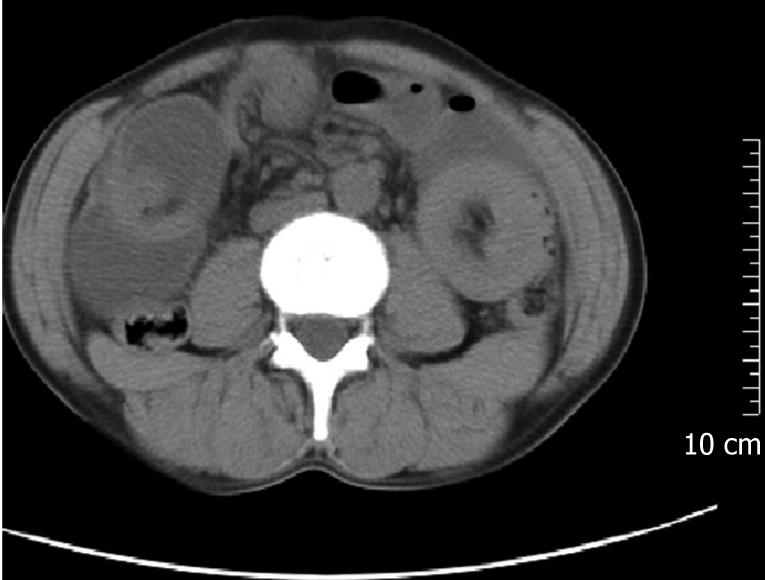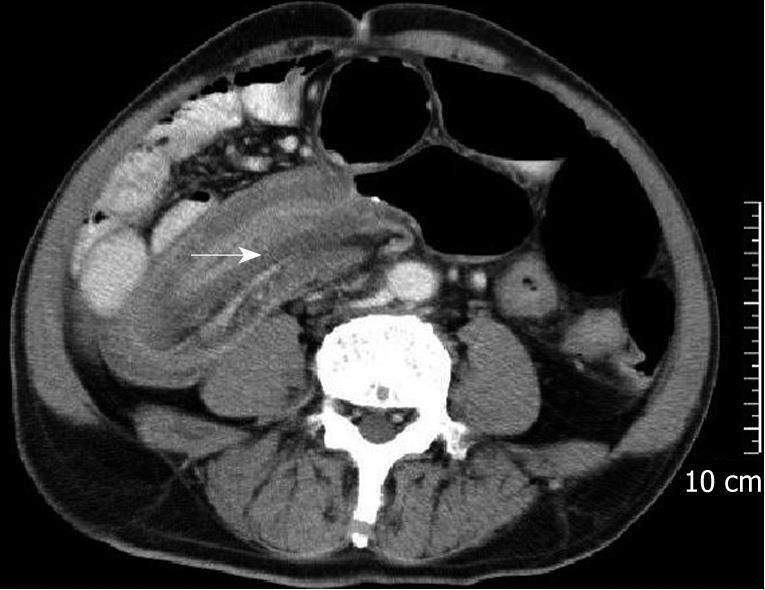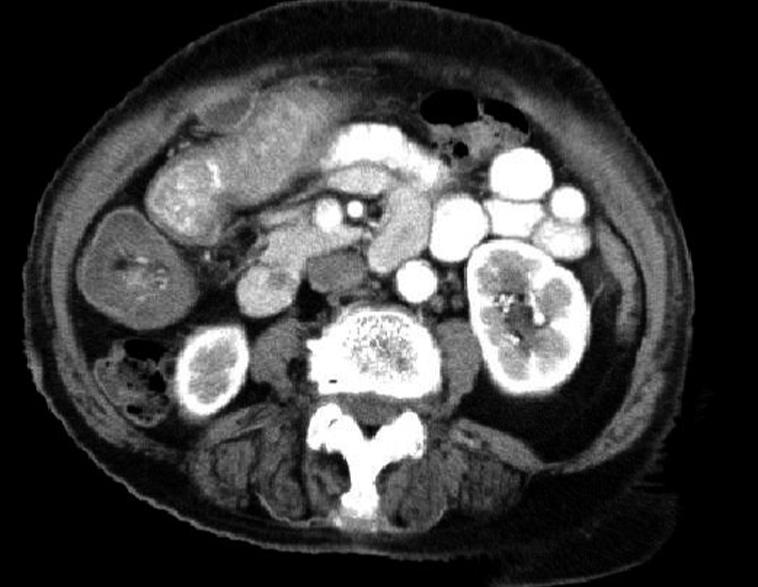Copyright
©2009 The WJG Press and Baishideng.
World J Gastroenterol. Jul 14, 2009; 15(26): 3303-3308
Published online Jul 14, 2009. doi: 10.3748/wjg.15.3303
Published online Jul 14, 2009. doi: 10.3748/wjg.15.3303
Figure 1 A 44-year-old man with two enteric intussusceptions due to multiple adenoma cancerations.
The intussusceptions appear as round target-shaped masses with a hypodense area of fat density close to its centre, the mesenteric fat. The beam is perpendicular to the axis of the intussusceptions.
Figure 2 A 64-year-old man with an ileocolic intussusception due to a ileum B cell malignant lymphoma.
A sausage-shaped mass with high density soft tissue above represents the edematous bowel wall of the intussuscipiens and the intussusceptum, with fat density below, representing mesenteric fat. The higher linear density within the mesenteric fat (arrow) is mesenteric blood vessels. This appearance is caused by the axis of the intussusception being parallel with the computed tomography (CT) beam.
Figure 3 Efferent loop intussusception with a tube.
A 70-year-old woman underwent Billroth II gastrectomy and efferent loop intubation for enteral nutrition. One month postoperatively, CT at the level of the lower abdomen shows a round, target-shaped mass in the left abdomen. The mass consists of a hyperdense tube (arrow), a “half-moon” shaped hypodense area medial to it, the intussuscepted mesenteric fat and a soft tissue rim representing the opposing walls of the intussuscipiens and the intussusceptum.
Figure 4 An 87-year-old woman with a colocolonic intussusception due to ascending colon carcinoma.
- Citation: Wang N, Cui XY, Liu Y, Long J, Xu YH, Guo RX, Guo KJ. Adult intussusception: A retrospective review of 41 cases. World J Gastroenterol 2009; 15(26): 3303-3308
- URL: https://www.wjgnet.com/1007-9327/full/v15/i26/3303.htm
- DOI: https://dx.doi.org/10.3748/wjg.15.3303












